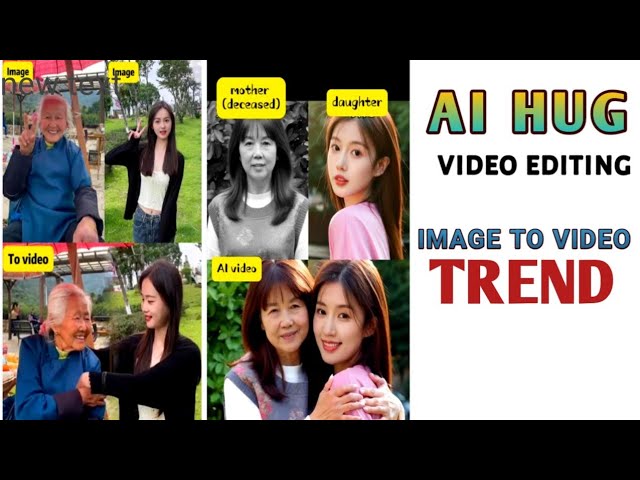Luma Ai Couple Photo To Hug Video Editing Tutorial | Viral Ai Photo To Video Tiktok Trend Tutorial
Science & Technology

Introduction
Creating engaging videos from photos has become a popular trend on social media platforms, particularly as viral content like hugging videos captures the audience's attention. In this tutorial, I will guide you through the process of transforming your couple photos into captivating video clips using Luma AI and Picverse. Let’s dive in!
Step 1: Prepare Your Photos
Start by opening your preferred photo editing application, such as PicsArt, to prepare your photos for the video. Here’s how to do it:
- Open the Photo Editor: Access the image editing tool on the website.
- Choose a Background: When the option appears, select your desired background color. For this example, we will choose a black background.
- Add Photos: Swipe right and click on the option to add photos. Choose two suitable images from your gallery that you want to convert into a video.
- Adjust Your Photos: Once you've added the photos, adjust their positioning as desired.
- Save Your Work: In the top right corner, click on the save option and choose to save it as a JPEG.
Once you have saved your edited image, exit the photo editor and prepare to create your video.
Step 2: Upload Your Image to Luma AI
Next, we will use the Luma AI platform to generate a video from your edited image:
- Visit the Luma AI Website: Open your browser and go to the Luma AI site.
- Log In: If it’s your first visit, create an account or log in if you have one.
- Navigate to Video Options: Once logged in, look for the options available. You will see three categories: Text to Video, Image to Video, and Character to Video. Select the Image to Video option.
- Upload Your Image: Click the area where it asks you to drag and drop your image. Upload the photo you previously edited from PicsArt.
- Enter Your Prompt: While your image is uploading, input a relevant prompt that describes the video concept. For example, “We are hugging each other.”
- Set Video Duration: Choose how long you want the video to last. A 10-second duration works well for hugging videos.
- Generate the Video: Click to create the video. This process may take around five minutes.
Step 3: Download and Review Your Video
After the video has been generated, follow these steps:
- View the Video: You can find your created video in the "End My Videos" section.
- Play the Video: By clicking on it, you can see the generated video. Note that the AI may slightly alter the appearance of elements in the video.
- Download the Video: If you’re satisfied with your creation, click the save option to download it to your device.
- Check Your Gallery: Open your phone's gallery to view the saved video. Evaluate how the video turned out, keeping in mind that clear images will yield better results.
With this method, you can effectively create compelling video content from still photographs. Just remember to ensure your photos are well-lit and clear for optimal AI results!
Now you can join the trend and create your own hugging videos!
Keywords
Ai Photo to Video, Video Editing Tutorial, Luma AI, PicsArt, Hugging Video, Social Media Trend, Generate Video, Image to Video, JPEG
FAQ
Q1: What is the best way to choose photos for this process?
Choose clear and well-lit images as they yield the best results when processed through AI.
Q2: How long does it take to generate a video?
The video generation process typically takes about five minutes after you upload your image and input the necessary details.
Q3: Is it necessary to create an account on Luma AI?
While creating an account may be beneficial, you can often skip this step and explore the platform without logging in.
Q4: What if my video does not come out as expected?
If the results are not satisfactory, check the quality of the original photos and consider adjusting them for clarity and lighting before re-uploading.
Q5: Can I use this method for other types of videos besides hugging videos?
Yes! You can use similar prompts and images to create various types of videos, depending on your creativity and preferences.

